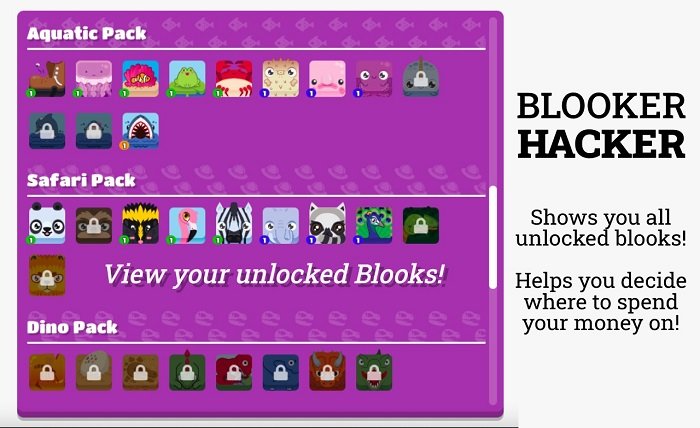Bloket Hack: Everything You Need to Know About This Trend

Introduction
The term “bloket hack” has recently gained attention in the digital world. Whether you are a tech enthusiast, cybersecurity expert, or simply curious, understanding what bloket hack entails is crucial. This blog post explores bloket hack, how it works, its implications, and ways to protect yourself from potential threats.
In recent years, hacking methods have evolved, making it easier for cybercriminals to exploit vulnerabilities. The bloket hack is a term used to describe specific hacking techniques that compromise systems and data. Understanding the bloket hack can help users recognize signs of intrusion and take proactive measures to secure their digital information.
How Does Bloket Hack Work?
The bloket hack operates through various sophisticated mechanisms. Cybercriminals use advanced tools and software to breach security barriers and access confidential data. These hacks often rely on phishing techniques, malware, or exploiting software vulnerabilities.
One of the common methods in a bloket hack is social engineering, where hackers manipulate users into revealing sensitive credentials. They may use fake emails, deceptive websites, or even phone calls to trick users. Another tactic involves deploying malicious software that bypasses firewalls and encryption layers.
Hackers using the bloket hack also take advantage of outdated software or weak passwords. Keeping your systems updated and using strong authentication methods can minimize the risks of falling victim to a bloket hack.
The Risks and Consequences of Bloket Hack
Falling victim to a bloket hack can have severe consequences. The risks range from financial losses to identity theft and reputational damage. Hackers can steal sensitive data, including banking details, personal information, and login credentials.
Once hackers execute a bloket hack, they may sell stolen data on the dark web or use it for fraudulent activities. Businesses that suffer from a bloket hack may experience financial setbacks, lawsuits, or even permanent closure if customer data is compromised.
Additionally, a bloket hack can disrupt critical infrastructure, affecting government agencies, healthcare institutions, and multinational corporations. The impact can be widespread, leading to economic instability and privacy violations.
Popular Bloket Hack Techniques Used by Cybercriminals
Hackers employ various techniques to carry out a bloket hack. Some of the most commonly used methods include:
1. Phishing Attacks
Phishing is a prevalent bloket hack technique where hackers create fake emails or websites to trick users into entering their login details. These fraudulent websites appear legitimate, deceiving users into compromising their sensitive data.
2. Malware and Ransomware
Cybercriminals use malware to gain unauthorized access to systems. Ransomware, a subset of malware, locks users out of their files and demands payment for access restoration. A bloket hack using malware can cause irreversible damage to organizations and individuals.
3. Keylogging and Spyware
Keyloggers record keystrokes, capturing usernames, passwords, and credit card details. Spyware secretly monitors a user’s activities, enabling hackers to execute a bloket hack without the victim’s knowledge.
4. SQL Injection
SQL injection is another form of bloket hack where hackers manipulate databases by inserting malicious code. This technique allows them to retrieve, modify, or delete data without authorization.
5. Distributed Denial-of-Service (DDoS) Attacks
A bloket hack through DDoS attacks floods a website with excessive traffic, causing it to crash. Hackers use this method to disrupt online services, making them unavailable to users.
How to Prevent a Bloket Hack?
Preventing a bloket hack requires implementing strong cybersecurity measures. Here are essential steps to protect yourself from cyber threats:
1. Use Strong Passwords and Multi-Factor Authentication (MFA)
Ensure that your passwords are complex and unique. Enable MFA to add an extra layer of security, making it harder for hackers to execute a bloket hack.
2. Keep Software and Systems Updated
Regularly updating your software and operating system helps patch security vulnerabilities, reducing the likelihood of a bloket hack.
3. Be Cautious of Phishing Scams
Avoid clicking on suspicious links or emails. Verify the sender’s details and do not enter sensitive information on unknown websites to prevent phishing-based bloket hacks.
4. Use Antivirus and Firewall Protection
Installing reputable antivirus software and activating firewalls can help detect and prevent a bloket hack before it occurs.
5. Backup Important Data Regularly
Regularly backing up your files ensures that you can restore your data in case of a bloket hack. Store backups in a secure location separate from your main system.
The Legal Implications of Bloket Hack
Engaging in a bloket hack is a criminal offense in many countries. Cybercrime laws impose severe penalties, including imprisonment and hefty fines, on those caught hacking systems.
Governments and cybersecurity organizations actively track and prosecute hackers who use the bloket hack to exploit vulnerabilities. Companies that experience a data breach due to a bloket hack must also comply with data protection regulations, such as GDPR and CCPA.
Additionally, victims of a bloket hack may pursue legal action against hackers, seeking compensation for damages. Organizations must implement strict security protocols to ensure compliance with cybersecurity laws.
What to Do If You Fall Victim to a Bloket Hack?
If you suspect that you have fallen victim to a bloket hack, take immediate action to mitigate the damage. Follow these steps:
- Change Your Passwords Immediately – Update all passwords for compromised accounts to prevent further unauthorized access.
- Enable Two-Factor Authentication (2FA) – Strengthen account security by adding an extra verification step.
- Scan for Malware and Viruses – Use reliable antivirus software to detect and remove any malicious programs.
- Notify Relevant Authorities – Report the bloket hack to cybersecurity agencies or law enforcement to investigate and track the attackers.
- Monitor Your Accounts – Keep an eye on your bank statements, emails, and online activity for any suspicious transactions.
Conclusion
The bloket hack poses significant risks to individuals and organizations. Understanding how it works, its potential dangers, and how to prevent it is crucial in today’s digital world. By implementing strong security measures, staying informed about hacking techniques, and practicing safe online habits, users can protect themselves from cyber threats. Cybersecurity is an ongoing process, and staying vigilant is the best defense against a bloket hack.
FAQs
1. What is a bloket hack?
A bloket hack refers to hacking techniques used to exploit security vulnerabilities in digital systems, leading to unauthorized access or data theft.
2. How can I protect myself from a bloket hack?
You can protect yourself by using strong passwords, enabling multi-factor authentication, keeping software updated, and avoiding phishing scams.
3. Can antivirus software prevent a bloket hack?
Yes, antivirus software helps detect and block malware that hackers use in a bloket hack. However, additional security measures are recommended.
4. What should I do if my account is hacked?
Change your passwords immediately, enable two-factor authentication, scan your device for malware, and report the incident to cybersecurity authorities.
5. Are businesses at risk of a bloket hack?
Yes, businesses are prime targets for a bloket hack due to the valuable data they store. Implementing strong cybersecurity measures is essential for protection.



